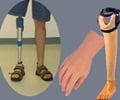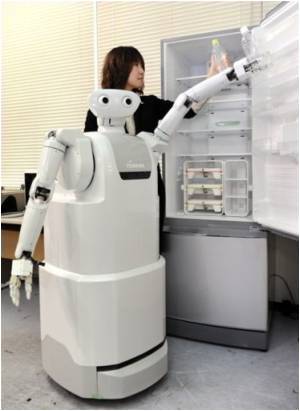Brain signals-controlled prosthetic arm has been developed by two biomedical students at Ryerson University.

Developed by third-year student Thiago Caires and second-year student Michal Prywata, the AMO Arm is controlled by the brain and uses compressed air as the main source of power. The digital device makes use of signals in the brain that continue to fire even after a limb is amputated.
Users wear a head-set that senses a signal - for example, the thought "up" - and sends it wirelessly to a miniature computer in the arm. The computer then compares the signal to others in a database. The resulting information is sent to the pneumatic system, which in turn, activates the arm to create the correct movement. Simulating the expansion and contraction of real muscles, the system makes use of compressed air from a small, refillable tank in the user's pocket. The artificial muscle system created by Caires and Prywata is a first in the field of prosthetics and they continue to work on perfecting their system.
Since the device does not include microelectronics and motors, it costs one-quarter of other functional prosthetic arms, which can run users more than 80,000 dollars, depending on the complexity of the prosthesis. As the AMO Arm is non-invasive, the period of adjustment for new users is drastically decreased. While traditional prosthetics may require weeks of learning and training, basic function with the AMO Arm can be mastered in mere minutes.
"In just ten minutes of practising, a person can pick up the mind-control aspect of the technology," added Prywata.
Source-ANI
 MEDINDIA
MEDINDIA



 Email
Email








